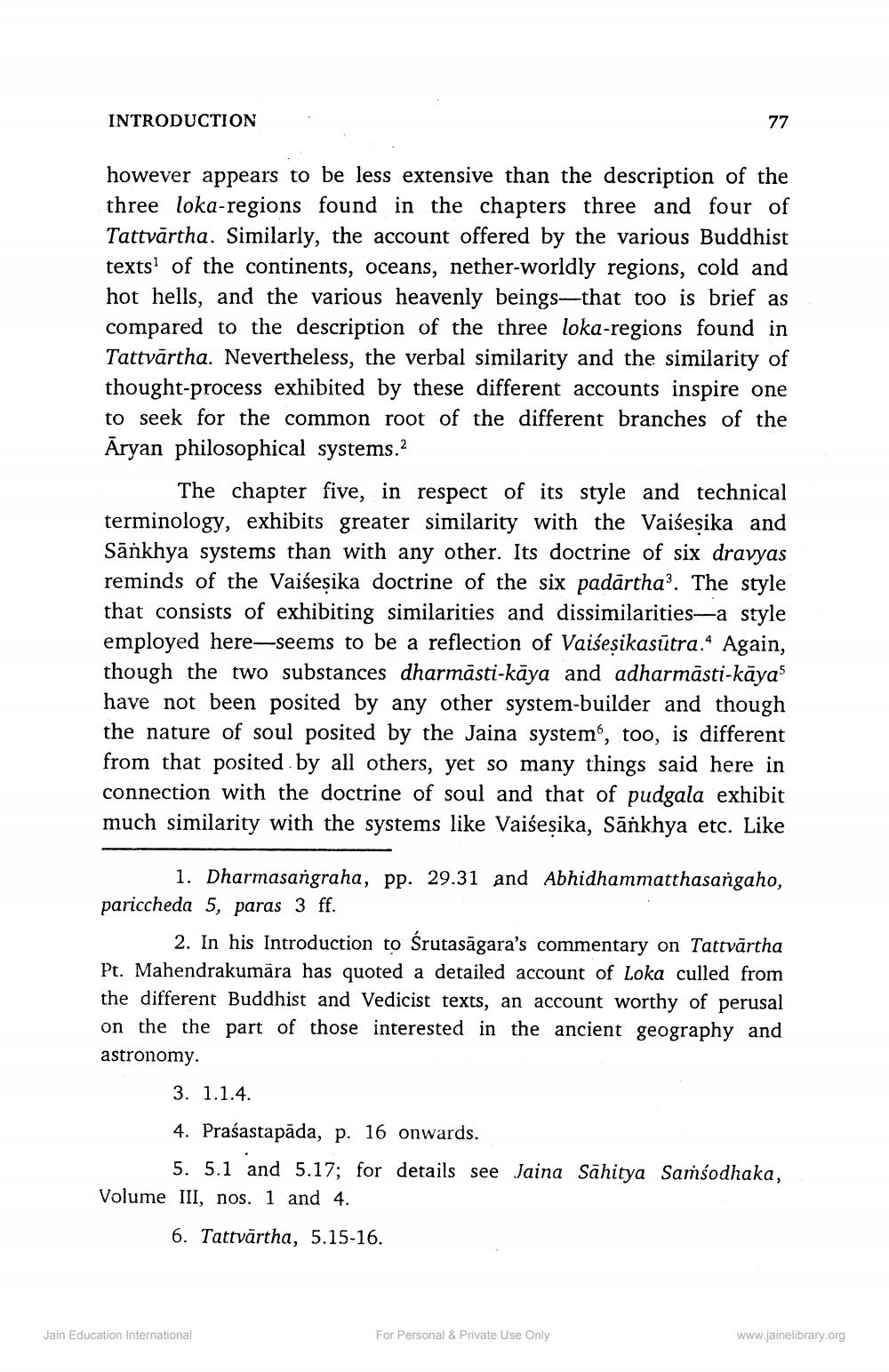________________
INTRODUCTION
77
however appears to be less extensive than the description of the three loka-regions found in the chapters three and four of Tattvārtha. Similarly, the account offered by the various Buddhist texts of the continents, oceans, nether-worldly regions, cold and hot hells, and the various heavenly beings—that too is brief as compared to the description of the three loka-regions found in Tattvārtha. Nevertheless, the verbal similarity and the similarity of thought-process exhibited by these different accounts inspire one to seek for the common root of the different branches of the Āryan philosophical systems.?
The chapter five, in respect of its style and technical terminology, exhibits greater similarity with the Vaiseșika and Sānkhya systems than with any other. Its doctrine of six dravyas reminds of the Vaiseșika doctrine of the six padārtha?. The style that consists of exhibiting similarities and dissimilarities—a style employed here—seems to be a reflection of Vaiseșikasūtra. Again, though the two substances dharmāsti-kāya and adharmāsti-kāyas have not been posited by any other system-builder and though the nature of soul posited by the Jaina system', too, is different from that posited by all others, yet so many things said here in connection with the doctrine of soul and that of pudgala exhibit much similarity with the systems like Vaiseșika, Sānkhya etc. Like
1. Dharmasangraha, pp. 29.31 and Abhidhammatthasangaho, pariccheda 5, paras 3 ff.
2. In his Introduction to Śrutasāgara's commentary on Tattvārtha Pt. Mahendrakumara has quoted a detailed account of Loka culled from the different Buddhist and Vedicist texts, an account worthy of perusal on the the part of those interested in the ancient geography and astronomy.
3. 1.1.4. 4. Prasastapāda, p. 16 onwards.
5. 5.1 and 5.17; for details see Jaina Sāhitya Samsodhaka, Volume III, nos. 1 and 4.
6. Tattvārtha, 5.15-16.
Jain Education International
For Personal & Private Use Only
www.jainelibrary.org




